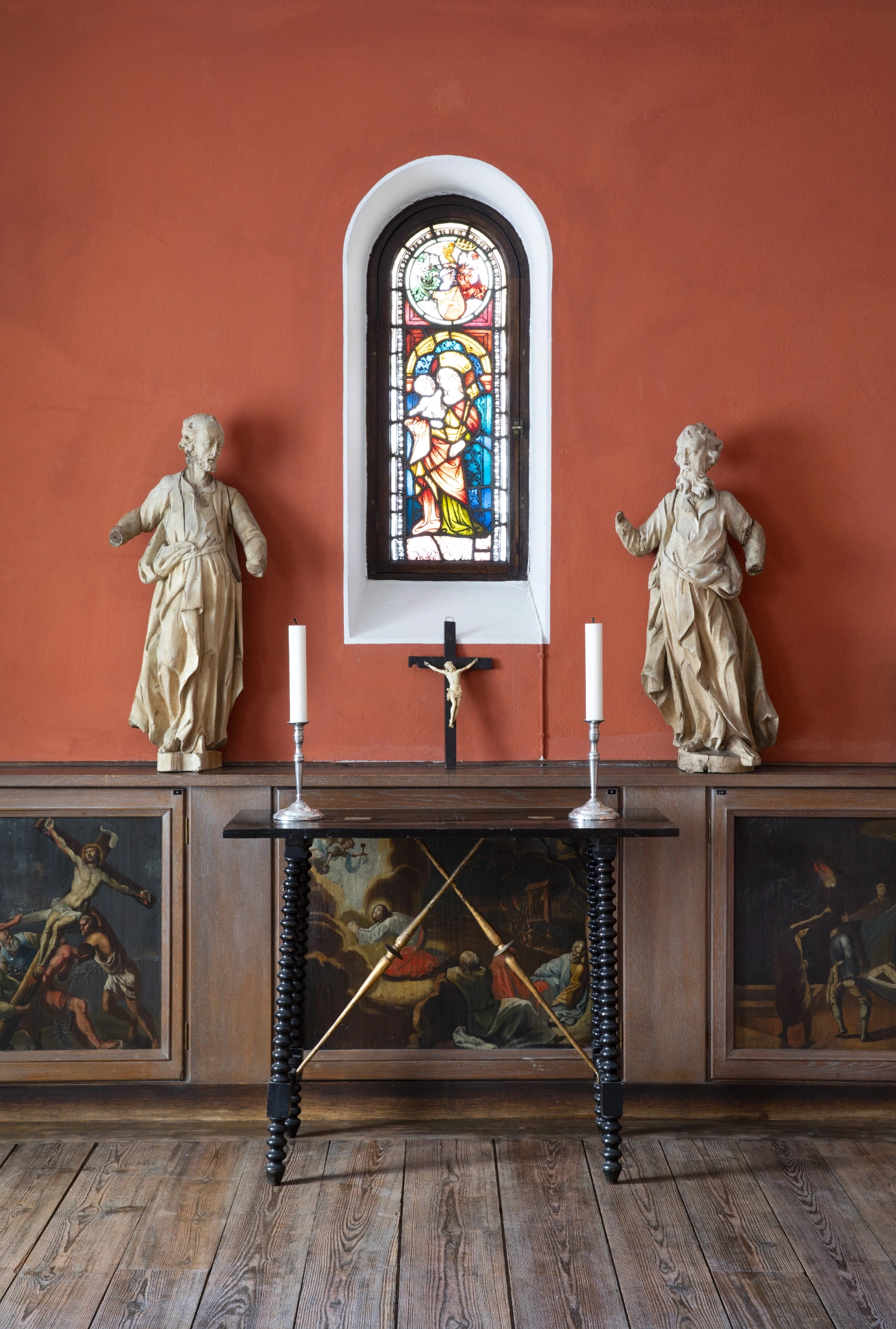
Chapel

Chapel
Church music, sacred art, and an interest in religious and spiritual matters remained strong influences all through Anderson’s life. In particular, the 1920s was a period of religious reflection for him. At that time, he initiated the restoration of several medieval churches, such as Turku Cathedral and the Pargas and Kimito churches. In 1926, Anderson designed a chapel at his home in Helsinki, together with the architects Werner West and Harry Röneholm. At first, the chapel was quite ascetic but its interior later became more lavish.
In the initial phase in the 1920s, the room was sparsely furnished, with whitewashed walls. The room, which had no other furnishings besides the current chairs, was dominated by a stained glass window on the rear wall. Anderson hung religious art from his collection on the walls. He later converted the chapel into a library with shelves and cabinets, whose door panels featured paintings of the life of Christ are most likely from a church in northern Germany.
After Anderson’s death, the chapel interior was redesigned for museum use. The room’s current appearance, with Pompeii red walls dates back to 1999. Among the old religious art in the chapel, two contemporary works have slipped in: Pauliina Turakka Purhonen’s Man of Sorrows 2 and Anna Estarriola’s Transportable Altar for a Divinity.

